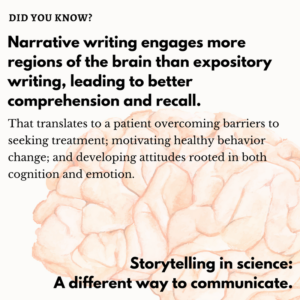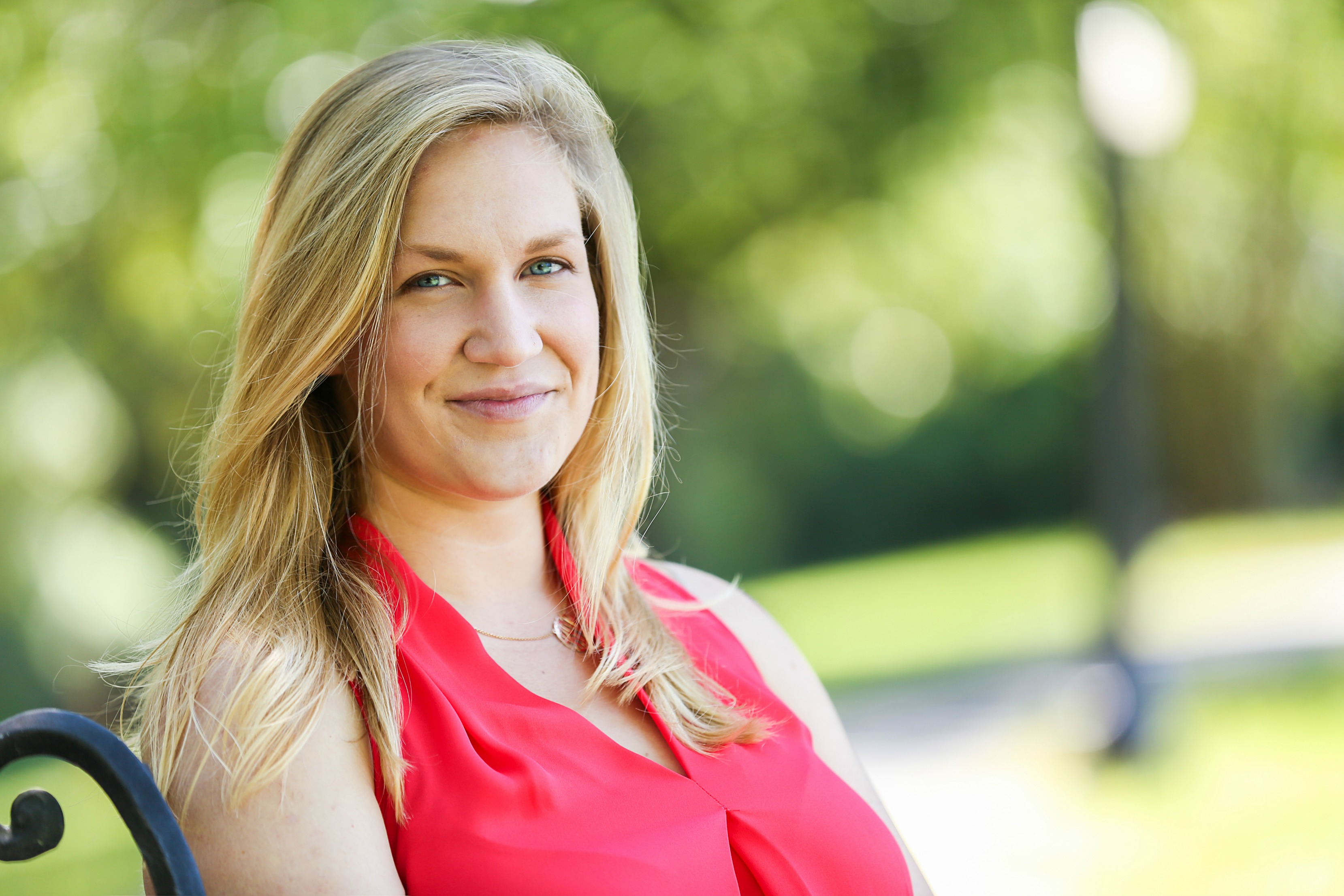Storytelling In Science: A Different Way To Communicate
Does it bother you when a news article misinterprets a study finding?
An article published in the British Medical Journal in 2014 described an association between exaggeration in academic press releases and subsequent health-related science news pieces. Exaggerations included “explicit advice not indicated in the journal article” and use of stronger causal language. But don’t bury your head in the sand just yet. In a post about the media and your research, Science Magazine makes a good point: if you don’t tell the story of your science, someone else will – and they won’t do it well. From a more optimistic perspective, engaging the media about your research will “help educate the general public, and promote a more positive attitude towards research.” With that in mind, let’s talk about how to communicate with the media, so that your science gets communicated.
A survey of scientists found that many “worry about being misquoted and find journalists unpredictable.” The lack of formal media training in most scientific programs means when you get a call from a reporter, it’s sink-or-swim. The surge in science communication online brings scientists closer to reporters and closer to the public. Whether you’re interviewed by a journalist, or crafting your own message for the public, learning to communicate your research findings succinctly can help you avoid 3 errors often found in science journalism: errors by simplification, errors by omission, and false statements.
These errors stem from a lack of understanding by both parties – journalists of the research topic, and scientists of the purpose of the article. Simplification is necessary to communicate key findings, and the purpose of science news article is to convey that big idea and the ‘So What?’ implications to the general public. Errors by omission follows, as many details crucial to a research paper just aren’t necessary in the media counterpart. In my last post, I wrote about tips for constructing effective elevator speeches, with the focus on narrowing a project down to the main idea. Being at the center of your research means we’re often surrounded by the details and see them all as important. But distilling the main idea down into that ‘So What?’ implication, and then adding on how you did it, is a key skill that everyone can develop with a little work.
Storytelling in Science
Robin Smith, PhD and science writer, shared her tips for telling a story with your science, at a talk with the Science Writing and Communication club at University of North Carolina at Chapel Hill. Beyond communicating the main idea of your research, telling a story with your science is more effective than our traditional logical format. Don’t believe me? Reading narrative stories engages more regions of your brain compared to reading expository writing. The more parts of your brain engaged, the more you understand, and the more you remember. Michael Dahlstrom says it well in his 2014 paper “Using Narratives and Storytelling to Communicate Science with Nonexpert Audiences:” when we move to data collection to science communication,

narratives are not only more appropriate but potentially more important.
Here’s Dr. Robin Smith’s 3 tips on telling a story with your science.
1. Lead with the Back Story
Ask yourself how you came up with this idea. It’s a great prompt for interviews with journalists or discussion at a family reunion. When we grab on to a research idea, we develop it, we do it, we publish it, and we continue to think forward. But it’s often our previous work that spurs our future work. Back pedal for a moment and start with a brief explanation of what you did, but then elaborate on why you did it. It may seem overly simple, but I guarantee you’ll replace blank stares with nodding heads.
2. Begin in the Middle
This tip is one of my favorites. When you’re reading a journal article, it’s up to you where you stop and start. But when you’re listening to a talk, you’re stuck. Expository writing provides all the information in that same logical order, but that doesn’t mean it’s the most interesting order. If your research involves a wacky method, or your results were particularly surprising, start there – catch your reader’s interest – and then go back to fill in the earlier parts. I think her example involved camping in a blizzard to study penguin behavior. Pretty wacky, right?
3. Pick a Data Point
Dr. Smith illustrated this last tip with (you guessed it) a story. She spoke about a man who lost his leg in a work accident, and felt limited by his prosthesis in simple tasks, like standing up from a chair. Our natural limbs, connected to our brain via nerves, anticipate our next movement. But many prostheses lag behind.
Why was she talking about prostheses? A researcher at North Carolina State University, Dr. Helen Huang, uses science to develop advanced control of adaptive, efficient, and safe robotic prostheses.
Picking a data point means describing a person, a place, or an event, that illustrates the problem your research studies or the impact of a solution it points to. Can you think of a ‘data point’ in your research?
Effective Communication = Clinical Impact
Does the idea of storytelling in science still make you cringe? Worried about your work being distorted into a sensationalizing headline? Or that you’ll end up writing to entertain, not inform? Or maybe you barely interact with the media and have no desire to change that in the future. Narrative science writing and story telling may have a bigger role in your science future than you think. Whether you write a guest post on your hospital’s blog, develop new patient communication materials, or you’re presenting at this week’s M&M, engaging your reader will make your science understood, and that’s what you want, right?
Communicating science effectively has direct clinical implications: it can help a patient overcome barriers to seeking treatment; it can provide a role model for behavior change through an anecdote; and the effective delivery of a science-based message via narrative writing will create patient attitudes strengthened by both a cognitive and emotional basis.
How do you communicate science?

Bailey DeBarmore is a cardiovascular epidemiology PhD student at the University of North Carolina at Chapel Hill. Her research focuses on diabetes, stroke, and heart failure. She tweets @BaileyDeBarmore and blogs at baileydebarmore.com. Find her on LinkedIn and Facebook.